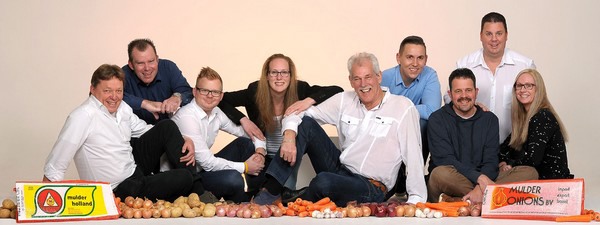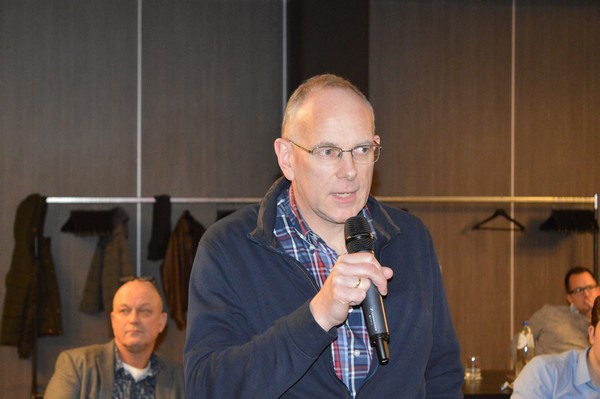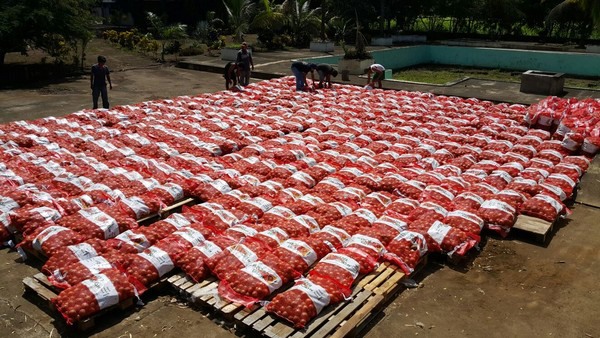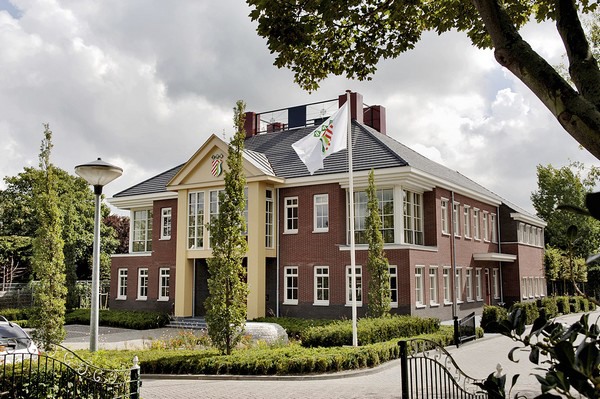In 2020, it cost about €2,100 to ship a container of onions from the Netherlands to Senegal, in Africa. Last season, exporters paid €3,500 for that. And those wanting to import onions from New Zealand will soon have to cough up more than €5,200. That is gradually becoming an issue. In this article, three Dutch agency exporters discuss the current onion market.
“It costs nearly €0.05/kg more to ship onions to West Africa," begins Gerard Hoekman of Mulder Onions. "In a normal market, that doesn't affect exports much, as shown in the statistics. We've done the same tonnage as last year. Sea freight was slightly more expensive, but onion prices were a little lower. That has a fairly limited impact on our usual price levels."
William Nannes of J.P. Beemsterboer Food Traders agrees, "In itself, it's not so bad. We can still get away with the €0.20 bale price. But, once that reaches €0.25 or more, things become tough. Then everyone starts looking for alternatives. Even though they should reach those prices, which they often don't. It depends on the time of year. Cargo space availability has, anyway, become far more of a problem than prices."

Team Mulder Onions
“When you call Maersk Line to book containers to New York, they tell you the ships to America are full for the rest of the year," says Dick Hoogesteger of Slot Frans & Co about the capacity shortage. "That's for both dry containers and reefers. And that situation may well last until the end of 2022. Freight prices rates to the Far East have sky-rocketed."
"But we're not that big an exporter to Southeast Asia. We do more to the Caribbean, Central America, and West Africa. The cost increases aren't too bad, especially to the Caribbean. All those reefer containers come back full, and they make good money on that."
“Business is booming for shipping companies that have, admittedly, been through a tough time. Our peak is between July 1 and December 31. We sign contracts with the major shipping companies for x number of containers for that time. But make no mistake, even then, cargo space isn't always guaranteed," Dick continues.
"Delays are commonplace and, last year, onboard COVID-19 infections were also a major disruptor." The logistics situation did not significantly affect Slot Frans & Co's general sales. "At least, not until late 2021. Our revenues have increased substantially over the last two years."
West Africa
In the first half of the season, West Africa offers certainty as a destination for Dutch onions. "Since they have a rainy season, it's almost impossible to grow onions in West Africa year-round," Gerard explains. "The fields flood. That's exactly when we export our onions. They grow short-day varieties, known for their limited shelf life. If they want onions all year, they'd have to develop a variety that keeps well once they're harvested. Until that happens, we fill that gap - they simply have no onions in their season's second half."
The Dutch onion sector lost the Russian market in 2014, forcing them to find alternate destinations. "That's worked out quite well. Flexibility is one of our strengths. That's also how we started doing a lot more towards Africa, which is an expanding market. That population is growing and becoming more prosperous. And we won't encounter, say, the New Zealand product there any time soon. At double our freight rate, that's a luxury product," says Gerard.

Dick Hoogesteger, Slot Frans & Co
Southeast Asia
“New Zealand could, of course, become a formidable competitor in Southeast Asia. It's becoming expensive for us to ship the onions there," William adds. "But the Philippines returns every year," Gerard says. "As do Malaysia, Singapore, and Indonesia. That's all pretty constant trade. South Korea and Japan, on the other hand, grow quite a lot of onions themselves, and they export a lot too."
"And if they're interested in onions, it's in sizes of which we have almost none - typically 80-plusses. They then quickly turn to the U.S. because we simply cannot supply the desired size. Spain, for example, can; they have many large-sized onions. But those onions don't store as well as ours."
Eastern Europe
These exporters are not yet concerned about possible competition from Eastern Europe yet, either. "Apart from the geopolitical tension, Ukraine is very expensive. Their crop hasn't been great. Moldova, for instance, has a long way to go cultivation and commercially-wise," Gerard continues. "And Poland seems to have a bit less volume this year," adds William. "Quite a lot of Dutch product is going there now. There are no figures yet, but those will reflect that."
"However, there seem to be about ten percent more onions, overall, in Europe. So, in the final reckoning, the Netherlands will send fewer onions to European countries," he says. According to Gerard, the strong Polish demand is a good example of fluctuating onion market. "The Netherlands survives on those fluctuations because, on balance, we always have too much. You could say we benefit somewhat from others' failings."

New Zealand
“With the mountain of onions from European countries like the Netherlands, France, and Germany remaining, supermarkets aren't eagerly awaiting product from New Zealand," he says. “And, by early January, we usually have a clear picture of what the supermarkets need. We don't know prices yet but do know roughly what they'll need in terms of volume."
"This year, due to the sky-high sea freight rates, that's only half as much as other years. Paying more than €5,200 per container raises kg prices by €0.20. So, we'll have to make, on average, €0.15 to €0.20 more than last year. Of course, the supermarkets won't want to pay those prices," Gerard explains. William agrees, "We still have good quality Dutch onions for €0.18/€0.19."
"Why would they then bring in those very expensive items?" Should Europe need fewer overseas onions in the coming years, too, New Zealand could face a structural cultivation problem, especially if onions remain so pricey. "We pay €0.65/kg, plus ten percent import duties for them. Supermarkets would then have to exceed that fabled €1 limit," Gerard explains.
Challenges
These exporters do not consider emerging new competition, trade barriers, or currency fluctuations to be Dutch onion export's biggest challenges. About competition: "Belgium has more and more onions, but that's due to Dutch companies that have their finger in the cultivation and sales pies there."
Trade barriers: "the Netherlands knows how to find new, hungry markets, so overcomes these easily." And currency fluctuations: "everything's more or less within range." They see banning crop protection products and overcapacity in the second half of the season as the main issues.
“The ever-limited availability of crop protection substances means Dutch onions don't store or travel as well. In potatoes, for example, other germination inhibitors are coming onto the market. But if you're no longer allowed to control diseases in onions, then it becomes very difficult. Or you have to start growing highly resistant onions," Gerard says.

Office J.P. Beemsterboer
“Exports always face the second issue in the season's second half. Then Africa falls away. And, with our capacity, we can't help everyone out. It would be far more beneficial to export, say, 25,000 tons over the entire year rather than 40,000 tons in the first half of the season and only 15,000 in the second. But that's not up to us," he adds resignedly. William sees competition in the Netherlands increasing enormously too.
"The processing exporters eagerly rush their orders through at almost any price. With the high transport prices, that's, obviously, dangerous. Also, it's becoming increasingly difficult for packers who don't export themselves. They're finding it harder to sell to export companies they used to supply because, in recent years, some packers-exporters have grown in size. And some agency-exporters have started packing themselves."
To tackle these problems, J.P. Beemsterboer has long had a wide product range. Slot Frans & Co., too, has followed suit lately. "Our strength, of course, is that we don't just do onions," explains J.P. Beemsterboer's William. "We have a broad package. So, whatever customers want, we can find and deliver. And we combine loads. For instance, we export lots of rice from Asia to Africa too. And we trade in other things, including chicken, palm oil, mayonnaise, and mustard."
At Slot Frans, onions still make up about 60% of the trade. Garlic is this import/export company's second product, and over the years, the product range has expanded to include sugar, dairy products, lentils, beans, and rice. "Onion trading has become overstrained, especially in the second part of the export season, from January 1 to the end of June. Those months have been tough in recent years," says Dick.
“In the coming months, we'll certainly be sending loads to Eastern European countries," says Gerard. "And we'll be active in Germany with small packages. Except for Senegal, Africa, miraculously, keeps chugging along very nicely. But every year's different. You simply can't make a five-year forecast," he concludes.
Gerard Hoekman Mulder Onions
Mulder Onions
Hagenroderstraat 32
6464 CP Kerkrade
+31 (0)45 567 87 00
gerard@mulder-onions.com
www.mulder-onions.com
William Nannes JP Beemsterboer
JP Beemsterboer
Stationsstraat 17
1749 EG Warmenhuizen
+31 (0) 226 396464
william@jpb.nl
www.beemsterboer.nl
Dick Hoogesteger![]() Slot Frans & Co.
Slot Frans & Co.
Burg. Jansenstraat 11
4431 BK ‘s-Gravenpolder
+31 113 311581
d.j.hoogesteger@slotfrans.nl
www.slotfrans.nl
